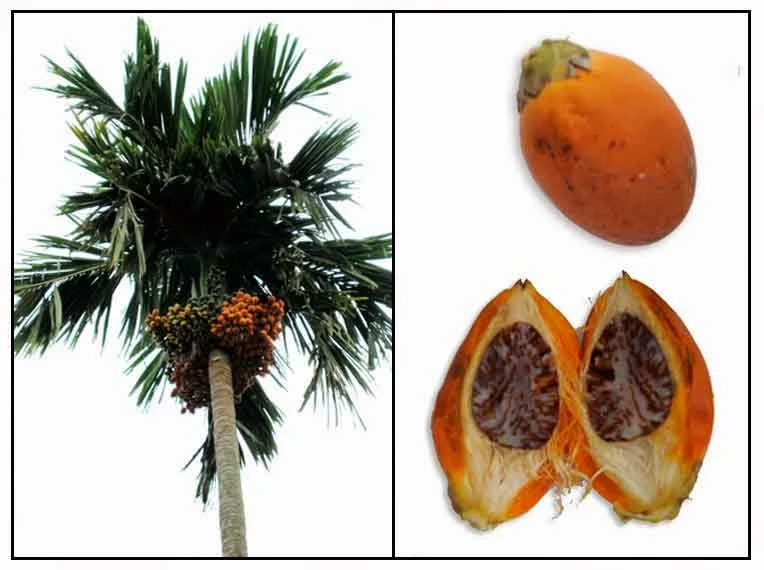By Liliana Usvat
Blog 183-365
Areca is a genus of about 50 species of palms in the family Arecaceae, found in humid tropical forests from China and India, across the Malay Archipelago, to the Solomon Islands.
COMMON NAMES: Adike, Areca, Betel Nut, Betel Palm, Betelnut, Fobal, Goorrecanut Palm, Gouvaka, Kamuku, Mak, Paan Supari, Pinlang, Sopari, Tambul, Tuuffel
Medicinal Uses

A palm tree of Malaysia, the areca yields a seed or nut once chewed by the natives to dye their mouths fashionably red. Although not relied on in human medicine, the alkaloid arecoline, the seed’s extractive, has the ability to destroy and repel worms in animals.

In Ayurvedic medicine betel nut is used as a diuretic, digestive, anthelmintic, astringent, and cardiotonic. The nuts are used in Traditional Chinese Medicine to treat diarrhoea, low blood pressure, slow heart rate, and other intestinal troubles. The leaves of the plant are consumed in Cambodia as a tea to treat lumbago and bronchitis. They use the root for liver disease and the fruit along with opium for the treatment of intestinal troubles.

A. catechu is used as an abortifacient in Malaysia, and the young shoots and flowers are eaten as food (Voogelbreinder 2009, 87).
History

Betel nuts have been used as a narcotic (in the true definition of the word, not the connotation it now has) for thousands of years. The practice is thought to have started in south-east Asia and there is archaeological evidence to support this view. The Spirit Cave site in Thailand has yielded palaeobotanical remains of Areca catechu, Piper betel, and edible lime. As it is this combination that is still chewed today for its psychoactive properties, this find provides circumstantial evidence for the practice of betel chewing in prehistoric times. These remains are between 7,500 and 9,000 years old. If the dating is accurate, this would make betel one of the earliest known psychoactive substances to be used by humans (Raghavan & Baruah 1958).

Blog 183-365
Areca is a genus of about 50 species of palms in the family Arecaceae, found in humid tropical forests from China and India, across the Malay Archipelago, to the Solomon Islands.
COMMON NAMES: Adike, Areca, Betel Nut, Betel Palm, Betelnut, Fobal, Goorrecanut Palm, Gouvaka, Kamuku, Mak, Paan Supari, Pinlang, Sopari, Tambul, Tuuffel
Medicinal Uses

A palm tree of Malaysia, the areca yields a seed or nut once chewed by the natives to dye their mouths fashionably red. Although not relied on in human medicine, the alkaloid arecoline, the seed’s extractive, has the ability to destroy and repel worms in animals.

In Ayurvedic medicine betel nut is used as a diuretic, digestive, anthelmintic, astringent, and cardiotonic. The nuts are used in Traditional Chinese Medicine to treat diarrhoea, low blood pressure, slow heart rate, and other intestinal troubles. The leaves of the plant are consumed in Cambodia as a tea to treat lumbago and bronchitis. They use the root for liver disease and the fruit along with opium for the treatment of intestinal troubles.

A. catechu is used as an abortifacient in Malaysia, and the young shoots and flowers are eaten as food (Voogelbreinder 2009, 87).
The betel nut can cause black stained
teeth and gums to those who chew it regularly, although it is excellent
for maintaining a healthy digestive tract, especially in disease-ridden
areas.
History

Betel nuts have been used as a narcotic (in the true definition of the word, not the connotation it now has) for thousands of years. The practice is thought to have started in south-east Asia and there is archaeological evidence to support this view. The Spirit Cave site in Thailand has yielded palaeobotanical remains of Areca catechu, Piper betel, and edible lime. As it is this combination that is still chewed today for its psychoactive properties, this find provides circumstantial evidence for the practice of betel chewing in prehistoric times. These remains are between 7,500 and 9,000 years old. If the dating is accurate, this would make betel one of the earliest known psychoactive substances to be used by humans (Raghavan & Baruah 1958).

Printed references related to betel nut
chewing go back to hundreds of years before the common era. In Pali, a
story dating from about 500 BCE describes a princess giving a present of
betel to her lover. Somewhere around 430 BCE, Theophrastus described
use of the nuts as a component of the betel morsel. Areca catechu is
mentioned in Sanskrit under the name guvaka, and in Chinese texts dating
from 150 BCE it was called pinlang. In Persia there were 30,000 shops
that sold betel nut in the capital town during the reign of Khosrau II
(King of Persia from 590 to 628).
Arabs and Persians who visited the
Hindustan area of India in the 8th and 9th centuries found the habit of
chewing the nut deeply rooted there. Ali al-Masudi, an Arab historian
who travelled through India in 916, described the chewing of betel nut
as a national custom. There were even those who voluntarily ascended the
funeral pyre comforted by betel nut. People who did not use betel nut
were socially isolated (Voogelbreinder 2009, 87).


No comments:
Post a Comment